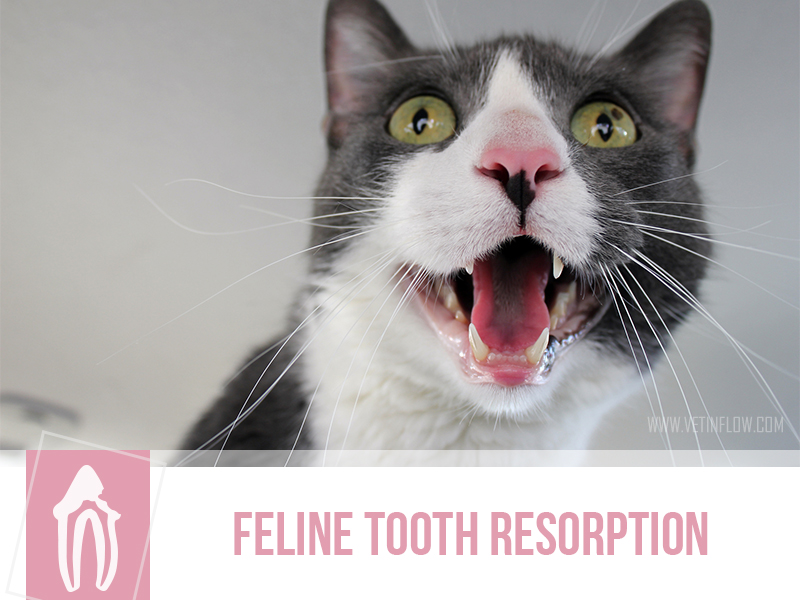
Feline Tooth Resorption

Cats and their teeth sometimes might find themselves in adversarial positions and this issue is one that is a bit odd. Feline tooth resorption is also called odontoclastic resorption and it's caused by the cat's own cells deciding (somewhat unilaterally) that the teeth no longer needs to be there.
These cells are called odontoclasts and usually they are responsible for the normal eruption of adult teeth by removing the roots of the deciduous teeth through resorption. However, these cells continue to exist long past the eruption of permanent teeth and they might start damaging these teeth.
What makes these perfectly normal cells go off rails? We aren't sure yet and it's most likely of multifactorial nature, which makes it hard to establish a strong cause. That being said, several causes are under investigation.
It might stem from nutritional issues like too much vitamin D, might be a hereditary issue or even an exaggerated reaction to inflammation in the gums (due to excess plaque for instance).
It might affect just one tooth or several teeth and we believe that nearly 50% of animals older than 5 years will have at least one tooth with lesions. Most of these occur in the root and the odontoclasts cause tooth structures to dissolve, leaving behind visible gaps.
While many animals can have resorption lesions, it is usually not severe enough for our house felines to show clinical signs but when it does it manifests as:
- Hypersalivation while eating
- Dropping food from their mouths frequently, especially dry food
- Hissing while chewing
- Behaviour changes like increased aggression or reclusion due to pain
If you notice these in your fearsome furry, take them to your vet! While the cause is still unknown, there are ways to alleviate pain and manage this situation that we are sure will improve your cat's discomfort.
Would you like to know more about cats? Check our Feline Courses:
Feline courses
Published: 13 Jul 2017
Read the previous article: Pet insurance: is it really worth it?

